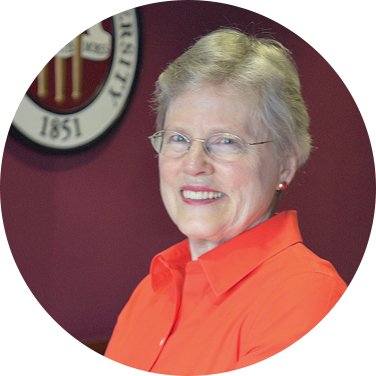Dr. Barbara Foorman’s Q&A Testimony to NYC Council on the Science of Reading
By: Dr. Maria Murray, Founder and CEO, The Reading League | January 29, 2024
Introduction
Those of us who have been “in the trenches” trying to ensure educators and other stakeholders become aware of the science of reading for decades are currently experiencing a tremendous mix of emotions. On the one hand, we are heaving sighs of gratitude that the term “science of reading” has become familiar and less misunderstood. How wonderful it is that states, districts, and schools are discontinuing ineffective approaches to teaching reading in favor of those that align with the findings from the science of reading! No doubt, there are also feelings of trepidation. It will be so easy to get this wrong. Many are already applying the science of reading in anemic, symbolic efforts that will lead to lackluster results, only to abandon efforts altogether.
There is a lot of promise and potential within the approaches that reading science has found to be highly effective. Teacher preparation programs can provide the critical knowledge and skills for teaching reading. Administrators can hire them into their schools, prepared and ready to assess and teach all of their students. Educators can become masterful reading teachers. Students can progress from one grade level to the next, entering each new classroom to meet their highly trained teacher equipped with knowledge and materials that align with the science of reading. Gaps can finally close. These are just a few of the promises that can be realized if we act with a sense of urgency and rely on the evidence base as our guide. We must also rely on reading science experts and previously successful rollouts. Too much is at stake to do otherwise.
The Reading League is delighted to share Dr. Barbara Foorman’s 12/14/23 testimony to the New York City Council on the Science of Reading. The national headquarters of The Reading League is in Syracuse, NY, and one of its 33 state chapters is a vibrant New York State chapter. Dr. Barbara Foorman lives in New York State. We all have a lot of interest in what is happening here, to say the least. If you are unfamiliar with Dr. Foorman’s work, I urge you to watch the recording of a Virtual Lecture Series we produced to interview her and showcase her legacy career.
Researcher, scientist, educator, advocate…Dr. Barbara Foorman has tirelessly worked to inform anyone she can about what is needed to do this right, whether a single teacher or a congressional panel. For this reason, we hope that New York City and the rest of New York State decision-makers attend to what she has to say. The children of New York State are counting on them to get it right (for additional stakeholder direction, I invite all stakeholder groups to peruse and widely share The Reading League’s Compass resource.)

Dr. Maria Murray
Founder and CEO, The Reading League
Questions and Answers for 12/14/23 Testimony to NYC Council on Science of Reading
Q: What is meant by the Science of Reading?
A: The science of reading refers to the compelling evidence that informs (a) how children learn to read and (b) instructional practices that promote proficient reading. This compelling evidence has been known for several decades and has been summarized in consensus documents (e.g., National Reading Panel, 2000), practice guides produced by the Institute of Education Sciences (IES; Baker et al., 2014; Foorman, Beyler, et al., 2016; Gersten et al., 2007, 2008; Kamil et al., 2008; Shanahan et al., 2010), and in meta-analytic summaries of research (e.g., Berkeley, Scruggs, & Mastropieri, 2010; Ehri, Nunes, Stahl, & Willows, 2001; Ehri, Nunes, Willows, et al., 2001; National Institute for Literacy, 2008; Therrien, 2004; Wanzek et al., 2013, 2016).
Q: If the Science of Reading has been known for so long, why are we still debating it?
A: Differing truth systems (i.e., epistemologies) seem to lie at the heart of the debate. For example, Group A typically priorities deductive methods that embed hypothesis testing, precise operationalization of constructs, and efforts to decouple the researchers’ beliefs from their interpretation and generalization of empirical evidence. Group B prioritizes inductive methods, such as phenomenological, ethnographic, and grounded theory approaches that embed focus on the meaning and understanding that comes through a person’s lived experience, and relies on the researcher’s own observations to shape meaning and principles. Group A says “Look at this mountain of evidence? How can you not believe it?”, whereas Group B says “It doesn’t make sense! It doesn’t match up with our experiences! Why should we value your knowledge above our own?” [See Stanovich, 2003, and Petscher et al., 2020, for further elaboration.]
As the National Research Council (2002) points out: “…Advances in scientific knowledge are achieved by the self-regulating norms of the scientific community over time, not, as sometimes believed, by the mechanistic application of a particular scientific method to a static set of questions” (p. 2). Group A scientists, whose body of research comprises the science of reading, use qualitative and quantitative methods to study within and across years how teachers’ instructional practices impact students’ reading progress and outcomes (e.g., Conner et al., 2007; Foorman et al., 2006).
Q: What does the science of reading say about how children learn to read?
A: As members of a literate community, we read and write to express thoughts and emotions. These are learned activities that reside on a foundation of linguistic skills and are mutually supportive. We decode from written letters to oral or silent language to comprehend word meaning. We encode from spoken language to letters to express meaning. Through explicit instruction in the decoding and encoding of words we grasp the alphabetic principle—that sounds in speech (phonemes) relate intentionally and conventionally to letters in written language (i.e., orthography). In English, this orthographic mapping extends beyond the consistent letter–sound relations of phonological decoding to include learning frequent, irregular words (e.g., of, said), morphemic elements (e.g., inflectional endings, plurals, affixes), and reliable syllable patterns (e.g., closed syllables such as in-sect). Mastering the depth and structure of English orthography is essential if students are to recognize words accurately and efficiently, thereby freeing cognitive resources to activate the linguistic devices and world knowledge critical for making text cohesive and, therefore, comprehensible (see Castles, Rastle, & Nation, 2018; Foorman, 2023; Rayner, Foorman, Perfetti, Pesetsky, & Seidenberg, 2001, 2002).
Additionally, we know from the Simple View of Reading (Gough & Tunmer, 1986; Reading = Word recognition X Language Comprehension) that language comprehension plays an equally important role in our ability to make sense of the text on the page. We understand words and text by applying vocabulary, syntax, semantics, and background knowledge (e.g., Foorman, 2022).
Q: If we know which reading instructional practices are based on empirical evidence, why aren’t these evidence-based practices used in classrooms?
A: Teacher preparation in colleges of education and professional development (PD) is largely informed by group B epistemologies and, therefore, are infrequently aligned with the science of reading. This results in teachers believing that systematic, explicit phonics instruction to ensure accurate and efficient word identification and spelling instruction to ensure fluent reading and writing are NOT important. This misinformed preparation and PD leads to encouraging bad instructional habits in K–1 classrooms, such as emphasizing pictures’ meaning cues over word identification skills (i.e., the three-cueing system) and failure to form reading groups in which children can practice the letter–sounds taught in decodable text. Children need to apply phonic skills to work through a word and blend sounds together rather than guessing at meaning by using pictures or using a strategy of “first sound then guess.” Reading groups should be informed by data and be flexible in composition. Teachers need to hear students read aloud and guide them to apply word identification strategies and learn to self-correct errors.
Academic diversity within classrooms makes differentiating instruction challenging. However, while teachers work with small groups other evidence-based strategies such as peer-assisted learning and meaningful center activities (e.g., Florida Center for Reading Research Student Center Activities) can be employed. Schoolwide plans for Response-to-Instruction (RtI) and Multitiered Systems of Support (MTSS) should also be in place to identify students needing additional reading support (e.g., Coyne et al., 2016; Pendharkar, 2023).
Q: Can systems-level approaches be utilized to encourage the use of evidence-based reading instruction?
A: Absolutely! Many examples exist, with the case of Mississippi being the most widely known. A private foundation (Barksdale Reading Institute) partnered with the MS legislature and the MS state board of education to bring in a superb State Superintendent of Education, Dr. Carey Wright, to implement a K–3 reading initiative. Dr. Wright worked with the IES-funded Regional Educational Laboratory Southeast to evaluate the initiative. The resulting IES report showed that gains in teacher knowledge on the procured PD modules (LETRS) were significantly associated with statewide coaches’ observations of LETRS practices in the classrooms, student engagement, and students’ progress on STAR reading assessments. A year later, MS was the only state in the nation to make significant reading gains on the National Assessment of Educational Progress (NAEP; Folsom et al., 2017; Foorman, 2020).
Thus, NYC Public Schools’ reading mandate has the potential to realize gains in students’ reading proficiency if well implemented and evaluated. Phasing in all elementary schools and secondary schools in a two-year period is overly ambitious. Replicating the Mississippi model of targeting K–3 cohorts of low-performing schools and then following those cohorts to upper elementary and middle schools is a more reasonable approach when resources are limited. The key to the success of NYC Reads is keeping the focus on improving the quality of classroom instruction with ongoing professional development (PD). One technique to aid ongoing PD is to video-record high implementing Phase 1 primary-grade teachers and use the videos in training Phase 2 teachers. Another technique is to utilize resources within the core reading program to ensure alignment of instruction, intervention, and assessment. To make pullout intervention affordable, examine cut points on universal screeners and classification indices to determine definitions of risk (Petscher, Kim, & Foorman, 2011). However, because students scoring below the 30th percentile on a norm-reference reading test are about one year behind, the best strategy to make intervention affordable is to reduce the number of struggling readers by improving classroom instruction. Dyslexia exists but not for 20% of the student population. That’s the percentage of students who struggle to read because they haven’t been taught well. Research suggests that dyslexia comprises about 5% of the student population and all but about 2% can be taught to read (Foorman & Al Otaiba, 2009; Foorman, Breier, & Fletcher, 2003).

Barbara Foorman, Ph.D., Emerita Professor of Education
Emerita Director of the Florida Center for Reading Research
Past Director of the Regional Educational Laboratory Southeast
Florida State University
Download Dr. Foorman’s complete report with references.